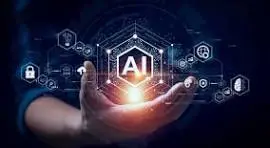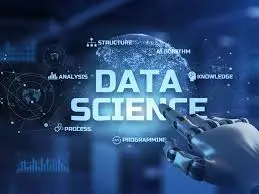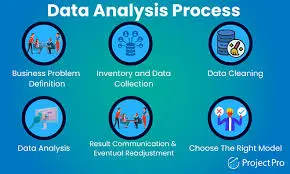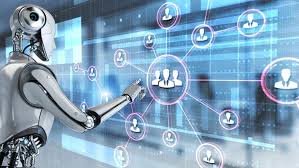
Artificial Intelligence (AI) refers to the simulation of human intelligence in machines that are programmed to think and act like humans. It involves the development of algorithms and computer programs that can perform tasks that typically require human intelligence such as visual perception, speech recognition, decision-making, and language translation.
 Artificial Intelligence Tutorial
Artificial Intelligence TutorialThere are various Definition provided by the scientists of various fields about Artificial Intelligence, some of them are mentioned below:
"Artificial Intelligence is the study of how to make computers do things at which, at the movement, people are better". ~ Rich and Knight (1991)
"Artificial Intelligence is the study of the computations that make it possible to perceive, reason and act." ~ Winston (1992)
"AI is the study of mental faculties through the use of computational models". ~ Charniak and McDermott (1985)
Types of Artificial Intelligence
Artificial Intelligence (AI) is broadly classified into:

What is an AI Agent?
An AI agent is a software or hardware entity that performs actions autonomously, with the goal of achieving specific objectives. It operates by perceiving its environment, processing information, making decisions, and taking actions based on its perceptions and goals.
Types of AI Agents
- Simple Reflex Agents
- Model-Based Reflex Agents
- Goal-Based Agents
- Utility-Based Agents
- Learning Agents
- Multi-Agent Systems

Problem Solving in AI
Problem-solving is a fundamental aspect of AI, involving the design and application of algorithms to solve complex problems systematically. AI systems utilize various problem-solving techniques to find solutions efficiently and effectively.
1. Search Algorithms in AI
Search algorithms navigate through problem spaces to find solutions. They can be categories into uninformed search and informed searches.
- Uninformed Search Algorithm explores the search space without any domain-specific knowledge beyond the problem's definition. These algorithms do not use any additional information like heuristics to guide the search.
- Informed Search Algorithm use additional information (heuristics) to make decisions about which paths to explore. This helps in efficiently finding solutions by guiding the search process towards more promising paths.
2. Local Search Algorithms
Local search algorithms operates on a single current state (or a small set of states) and attempt to improve it incrementally by exploring neighboring states.
3. Adversarial Search in AI
Adversarial search deal with competitive environments where multiple agents (often two) are in direct competition with one another, such as in games like chess, tic-tac-toe, or Go.
4. Constraint Satisfaction Problems
Constraint Satisfaction Problem (CSP) is a problem-solving framework that involves variables, each with a domain of possible values, and constraints limiting the combinations of variable values. The objective is to find a consistent assignment satisfying all constraints.
Knowledge, Reasoning and Planning in AI
Knowledge representation in Artificial Intelligence (AI) refers to the way information, knowledge, and data are structured, stored, and used by AI systems to reason, learn, and make decisions. Common techniques for knowledge representation include:
First Order Logic in Artificial Intelligence
First Order Logic (FOL) is use to represent knowledge and reason about the world. FOL allows for the expression of more complex statements involving objects, their properties, and the relationships between them.
- Knowledge Representation in First Order Logic
- Syntax and Semantics of First Order Logic
- Inference Rules in First Order Logic
Reasoning in Artificial Intelligence
Reasoning in Artificial Intelligence (AI) is the process by which AI systems draw conclusions, make decisions, or infer new knowledge from existing information. Types of reasoning used in AI are:
To learn more about reasoning in AI, you can refer to: Types of Reasoning in AI
Planning in AI
Planning in AI generates a sequence of actions that an intelligent agent needs to execute to achieve specific goals or objectives. Some of the planning techniques in artificial intelligence includes:
- Classical Planning: Assumes a deterministic environment where actions have predictable outcomes.
- Probabilistic Planning: Deals with uncertainty in the environment, where actions may have probabilistic outcomes.
- Hierarchical Planning: Breaks down complex tasks into simpler sub-tasks, often using a hierarchy of plans to solve different levels of the problem.
Uncertain Knowledge and Reasoning in AI
Uncertain Knowledge and Reasoning in AI refers to the methods and techniques used to handle situations where information is incomplete, ambiguous, or uncertain. For managing uncertainty in AI, following methods are used:
Learning in AI
Learning in Artificial Intelligence (AI) refers to the process by which a system improves its performance on a task over time through experience, data, or interaction with the environment.
1. Supervised Learning: The model is trained on labeled dataset to learn the mapping from inputs to outputs.
- Linear Regression
- Logistic Regression
- Support Vector Machines (SVM)
- Decision Trees
- Random Forests
- Neural Networks
Semi-supervised learning uses both labeled and unlabeled data to improve learning accuracy.
2. Unsupervised Learning: The model is trained on unlabeled dataset to discover patterns or structures.
3. Reinforcement Learning: The agent learns through interactions with an environment using feedbacks.
4. Deep Learning: The concept focuses on using neural networks with many layers (hence "deep") to model and understand complex patterns and representations in large datasets.
- Perceptron
- Artificial Neural Networks
- Activation Functions
- Recurrent Neural Network
- Convolutional Neural Network
5. Probabilistic models in AI deals with uncertainty, making predictions, and modeling complex systems where uncertainty and variability play a crucial role. These models help in reasoning, decision-making, and learning from data.
- Gaussian Mixture Models (GMMs)
- Naive Bayes Classifier
- Variational Inference
- Monte Carlo Methods
- Expectation-Maximization (EM) Algorithm
Communication, Perceiving, and Acting in AI and Robotics
Communication in AI and robotics facilitates interaction between machines and their environments, utilizing natural language processing. Perceiving involves machines using sensors and cameras to interpret their surroundings accurately. Acting in robotics includes making informed decisions and performing tasks based on processed data.
Generative AI
Generative AI focuses on creating new data instances that resemble real data, effectively learning the distribution of data to generate similar, but distinct, outputs.
- Generative Adversarial Networks (GANs)
- Variational Autoencoders (VAEs)
- Diffusion Models
- Large Language Models
What is Artificial Intelligence?
Artificial Intelligence (AI) is a rapidly evolving field of computer science that focuses on creating intelligent machines capable of simulating human-like cognitive processes. At its core, AI seeks to enable machines to perceive their environment, learn from experience, reason, and make decisions autonomously. From virtual personal assistants and recommendation systems to autonomous vehicles and healthcare diagnostics, AI has become increasingly integrated into various aspects of our lives, revolutionizing industries and reshaping the way we interact with technology. As AI continues to advance, it holds the promise of solving complex problems, driving innovation, and transforming society in profound ways.
History of Artificial Intelligence
- 1940s-1950s: Early AI concepts emerged with neural networks and the Turing Test. The term "Artificial Intelligence" was coined at the 1956 Dartmouth Conference.
- 1960s-1970s: AI saw growth with developments like the first industrial robot and ELIZA, an early chatbot. However, limitations in AI research led to the first AI winter in the 1970s.
- 1980s: AI research revived with expert systems and the popularization of backpropagation in neural networks. Despite this, the industry faced another downturn by the late 1980s.
- 1990s-2000s: Significant breakthroughs included IBM's Deep Blue defeating Garry Kasparov and the introduction of deep learning techniques. AI began integrating into consumer products, like the Roomba and early self-driving cars.
- 2010s: AI experienced a boom with advancements in deep learning, natural language processing (e.g., IBM's Watson), and AI-powered assistants. Google DeepMind's AlphaGo marked a significant milestone.
- 2020s: AI became widespread in everyday life, with innovations like GPT-3 and AlphaFold, alongside growing ethical concerns surrounding AI's impact.

- Definition:A mobile application is a software program that is designed to be used on a mobile device, such as a smartphone or tablet.
- Purpose:Mobile apps can be used for a variety of purposes, including communication, entertainment, productivity, and accessing information.
- Examples:Common examples include social media apps (Facebook, Instagram, Twitter), messaging apps (WhatsApp, Telegram), navigation apps (Google Maps, Waze), and gaming apps.
- Types of Mobile Applications:
- Native Apps: Developed specifically for a particular mobile operating system (iOS or Android) using its native programming languages (Swift/Objective-C for iOS, Java/Kotlin for Android).
- Web Apps (Progressive Web Apps - PWAs): Built using web technologies (HTML, CSS, JavaScript) and run within a web browser, offering a similar experience to native apps.
- Hybrid Apps: Combine elements of both native and web apps, using a web framework (e.g., React Native, Ionic) to create a cross-platform app that can run on multiple mobile operating systems.
- Key Components:
- User Interface (UI): The visual design and layout of the app, focusing on how it looks and feels.
- User Experience (UX): The overall experience a user has while interacting with the app, focusing on usability, ease of navigation, and overall satisfaction.
- Backend Services: The infrastructure that supports the app, including data storage, processing, and communication with other systems.
- API Integration: Allows the app to interact with external services and data sources.
- Mobile App Development:The process of creating mobile applications, which involves planning, designing, coding, testing, and deploying the app.
- Mobile App Development Platforms:
- Native Development: Using languages like Swift (iOS) and Kotlin/Java (Android).
- Cross-Platform Development: Using frameworks like React Native, Ionic, or Flutter.
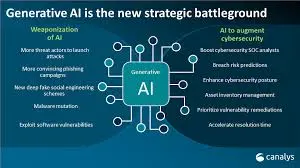
- What it is:Generative AI, also known as GenAI, is a subset of AI that uses generative models to produce new data instances.
- How it works:These models learn patterns and structures from vast datasets and then use that knowledge to generate new, original content.
- Examples of Generative AI:
- Text Generation: Tools like ChatGPT (powered by GPT models) can generate text, stories, articles, and more, based on user prompts.
- Image Generation: Models like DALL-E can create realistic or artistic images from text descriptions.
- Music Generation: AI can compose original music pieces based on various styles and parameters.
- Video Generation: AI can create videos, including animations and synthetic videos.
- Underlying Technology:Generative AI often relies on deep learning techniques, including:
- Generative Adversarial Networks (GANs): These involve two neural networks, a generator and a discriminator, that compete with each other to generate increasingly realistic outputs.
- Transformers: These are powerful models, like those used in GPT, that excel at processing sequential data, making them well-suited for text generation.
- Variational Autoencoders (VAEs): These models learn a compressed representation of the data and then use it to generate new data points.
- Applications:Generative AI has a wide range of potential applications, including:
- Content Creation: Generating marketing materials, articles, scripts, and more.
- Design and Art: Creating unique artworks, designs, and prototypes.
- Product Development: Generating new product ideas and designs.
- Scientific Research: Simulating complex phenomena and generating synthetic data.
- Education: Creating personalized learning materials and interactive experiences.
- Gaming: Generating dynamic game environments and characters.
- Examples of Generative AI tools:
- Adobe Photoshop: AI-powered photo editing.
- ElevenLabs: AI voice and audio generation.
- Suno: AI voice and audio generation for creative text-to-audio results.
- Beautiful.ai: AI presentation apps for design automation.
- Potential Issues:
- Bias: Generative AI models can reflect biases present in the data they are trained on.
- Copyright: Generated content may raise copyright issues if it mimics existing works.
- Misinformation: Generative AI can be used to create fake or misleading content.
